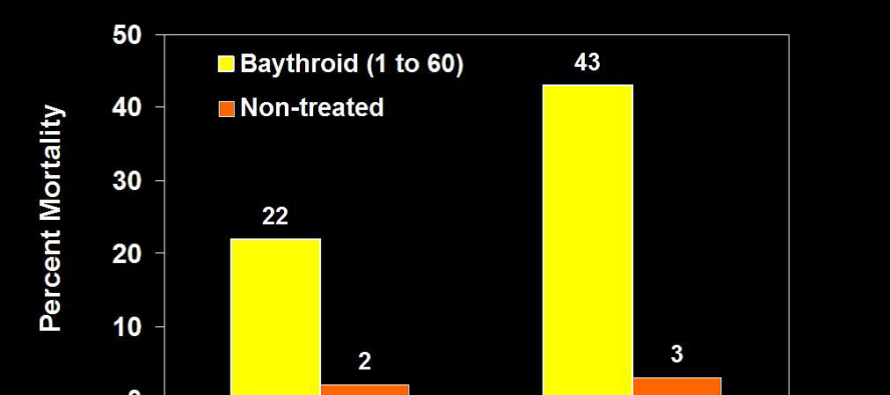Bollworms in Dual Gene Bt Cotton: Control and Expectations

Over the last 7 days we have had numerous reports of high bollworm numbers in some BollGard II, TwinLink, and WideStrike fields in the Mississippi Delta. We have seen fields in the past that reach treatable levels but some reports are much higher than we have seen in recent years. At this time, there does not appear to be any specific varieties that are adversely affected more than others. It appears to be a function of high pressure in isolated areas at this time. Infestations are primarily starting in bloom tags but several reports of terminal and square damage as well.
It has always been very difficult to achieve adequate control of bollworms once they get inside bloom tags. The reduced efficacy of pyrethroid insecticides in recent years on bollworm is also likely playing into this. In light of the high bollworm numbers in some areas of the state, a question that keeps coming up is what level of control can you expect treating bollworms in bloom tags with pyrethroids? Below are results of a study that Dr. Jeff Gore conducted many years ago trying to address this issue. Keep in mind that bollworms were still very susceptible to pyrethroids at the time of this study. Most of the bollworm eggs we are finding in B.t. cotton are on stuck bloom tags or purple flowers. As these eggs hatch they move into the bloom tag and are some what protected while feeding. After getting some size they are moving into the top of the small bolls. In the study below, they placed one day old larvae in white flowers and marked these flowers. They waited 24 hours, then treated with 1:60 Baythroid and went back and rated the test at 24 and 72 hours. You can see from the graph that at 72 hours they only were able to obtain 43% control of bollworm larvae once under blooms. The combination of larvae feeding in protected sites, difficulty getting material down in the canopy, and reduced efficacy of pyrethroids in recent years will likely lead to far less control today than in the study below.
There have been numerous questions about using Prevathon, Besiege, and Belt in Dual Gene cotton lately and many applications of these diamide chemistries have already been applied. We have extensively tested these materials and while they will provide superior control compared to pyrethroids, chasing established 4-6 day old worms in bloom tags even with diamides will still leave some in the field. However, these products are good options in select situations.





Let me tell You a sad story ! There are no comments yet, but You can be first one to comment this article.
Write a comment